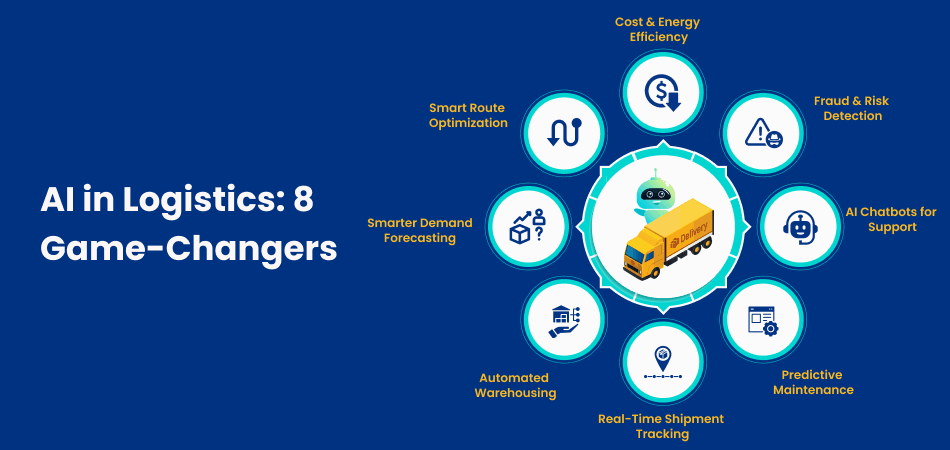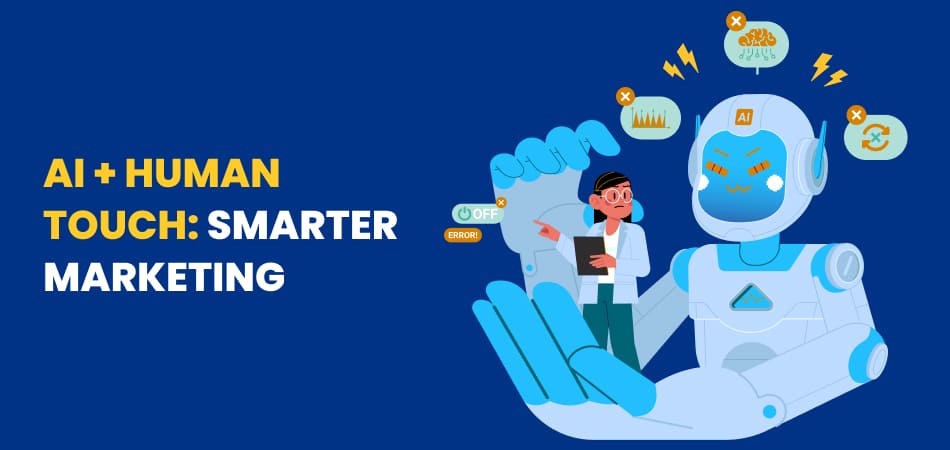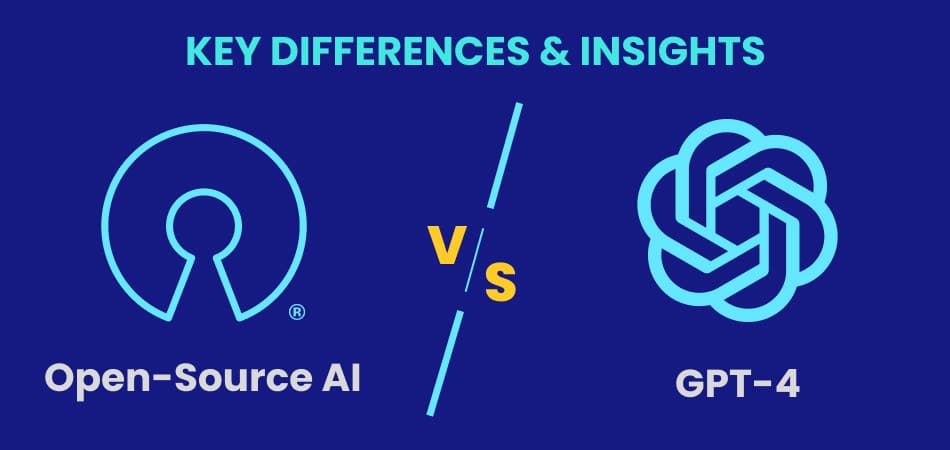Why AI Matters in Logistics: The Numbers
Here are some amazing results companies are getting with AI:
- 73% fewer mistakes when predicting what customers will order
- $1.3 trillion in savings possible worldwide with AI in logistics
- 35% faster deliveries with AI-planned routes
- 25-30% lower costs with smart automation
1. Better Prediction of What Customers Want
The Problem: Companies often guess how much product they’ll need. This leads to too much inventory (wasting money) or not enough (unhappy customers).
How AI Helps: AI looks at past sales, weather, holidays, and even social media to predict what people will buy. It’s much more accurate than human guessing.
Real Examples:
- Amazon uses AI to know what to stock in each area
- Walmart uses AI to manage inventory in over 4,700 stores
- Zara uses AI to make less unwanted clothing
What This Means for You:
- Save 20-40% on storage costs
- Keep customers happy with products in stock
- Waste less money on products that don’t sell
- Get better deals with suppliers
2. Finding the Best Routes
The Problem: Planning delivery routes by hand takes too much time and often isn’t the best way. This costs more money and makes deliveries late.
How AI Helps: AI considers traffic, weather, truck size, and driver schedules to find the fastest, cheapest routes. It can even change routes during the day if problems happen.
Success Stories:
- UPS saves over 100 million miles every year with AI
- FedEx plans routes for 200,000+ vehicles daily
- DHL uses AI to avoid delays before they happen
Benefits:
- Use 15-25% less fuel
- Deliver more without buying more trucks
- Keep customers happy with on-time deliveries
- Help the environment with less pollution
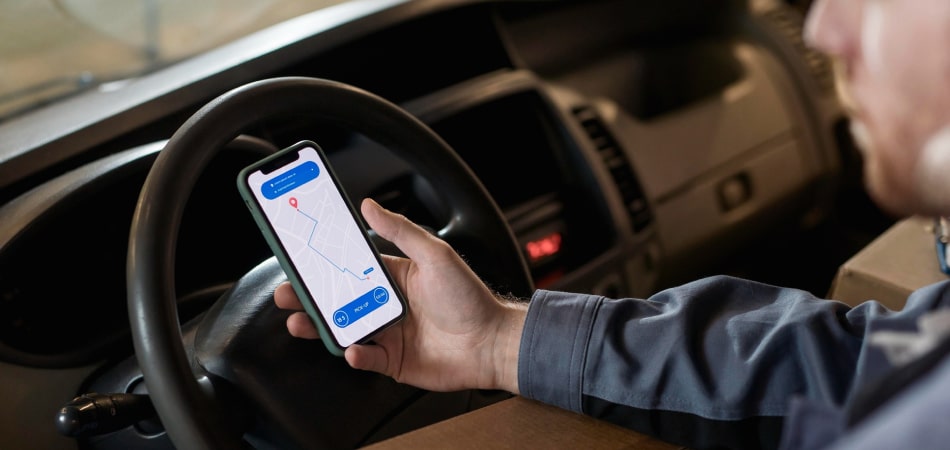
3. Fixing Trucks Before They Break
The Problem: When trucks break down unexpectedly, it costs a lot of money and delays deliveries.
How AI Helps: Sensors on trucks collect data about how the engine, brakes, and other parts are working. AI spots problems before they cause breakdowns.
How It Works:
- Sensors collect data from truck parts
- AI finds patterns that show upcoming problems
- Mechanics get alerts before breakdowns happen
- Repairs are scheduled at convenient times
Real Results:
- Volvo Trucks cut unexpected breakdowns by 25%
- Mercedes-Benz saves 15% on truck repairs
- Scania makes trucks last 10-15% longer
4. Smart Warehouses with Robots
The Problem: Picking, packing, and moving items in warehouses by hand is slow, expensive, and mistakes happen often.
How AI Helps: Smart robots can see, think, and move items around warehouses automatically. They work faster and make fewer mistakes than humans.
What Robots Do:
- Move items around the warehouse automatically
- Pick products from shelves accurately
- Sort packages by where they’re going
- Count inventory without mistakes
Companies Using This:
- Amazon has 750,000+ robots in their warehouses
- Alibaba processes 1 million packages daily with mostly robots
- Ocado fulfills grocery orders with 99.95% accuracy using robots
5. Avoiding Problems Before They Happen

The Problem: Supply chains face many problems like storms, political issues, or suppliers failing. These can shut down operations.
How AI Helps: AI watches news, weather, and supplier performance constantly. It warns about problems early so companies can prepare.
How AI Protects Your Business:
- Reads news to spot early warning signs
- Checks supplier health to avoid surprises
- Models “what if” scenarios to prepare for problems
- Suggests backup suppliers when needed
Success During COVID-19:
Companies using AI responded 3 times faster to supply chain problems and kept serving customers better than companies without AI.
6. Better Customer Service
The Problem: Customers have many questions about their shipments. Answering these questions requires a lot of staff and time.
How AI Helps: AI chatbots can answer common questions instantly, 24 hours a day, in any language. They only pass difficult questions to human staff.
What AI Customer Service Can Do:
- Answer questions instantly any time of day
- Send updates about deliveries automatically
- Handle multiple languages for global customers
- Identify unhappy customers and prioritize helping them
Results:
- Handle 80% of questions without human help
- Answer customers in seconds instead of hours
- Increase customer satisfaction by 25-35%
- Cut customer service costs by 40-50%
7. Understanding Your Business Data
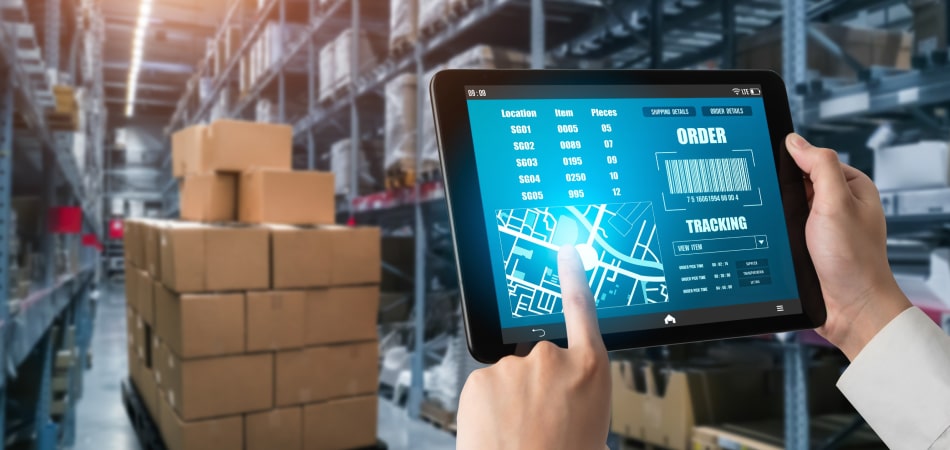
The Problem: Logistics creates tons of data, but it’s hard to understand what it all means and make good decisions.
How AI Helps: AI looks at all your business data and tells you what’s working, what’s not, and what you should do next.
What You Get:
- Real-time dashboards showing how your business is doing
- Cost-saving suggestions across all operations
- Planning help for busy and slow periods
- Competitor insights to stay ahead
Business Impact:
Companies using AI analytics make decisions 23% faster and are 19% more profitable than those using old methods.
8. Last-Mile Delivery Innovation
The Problem: The final delivery to customers costs the most (53% of total shipping costs) and is the hardest part.
How AI Helps: Self-driving delivery vehicles, drones, and smart lockers make final delivery faster and cheaper.
New Delivery Methods:
- Delivery drones for hard-to-reach places
- Self-driving robots for city deliveries
- Smart lockers that customers can access anytime
- Flexible delivery times based on customer preferences
Companies Leading the Way:
- Wing (Google) has made over 350,000 drone deliveries
- Starship Technologies robots make 100,000+ deliveries monthly
- Amazon Scout tests robot deliveries in neighborhoods
How to Start Using AI in Your Business
Step 1: Look at Your Current Operations (Months 1-2)
- Find where AI could help most
- Check if your data is good enough
- Set goals for what success looks like
- Pick one area to test first
Step 2: Test AI in a Small Way (Months 3-6)
- Try AI in one part of your business
- Watch how well it works
- Get feedback from your team
- Make improvements based on what you learn
Step 3: Expand What Works (Months 6+)
- Use successful AI tools in more areas
- Connect AI with your existing systems
- Keep making improvements
- Look for new ways to use AI
Why Choose KIS Works for Your AI Journey
At KIS Works, we make AI simple for logistics companies. We don’t just give you technology – we help you succeed with:
- Proven experience helping logistics companies
- Custom solutions built for your specific needs
- Complete support from planning to daily use
- Systems that grow with your business
What We Do:
- Build custom AI solutions for your business
- Help you use your data better
- Connect new AI tools with your existing systems
- Train your team to use new technology
- Provide ongoing support and improvements
FAQs for SEO
Q1. How is AI used in logistics?
AI is used in logistics for route optimization, demand forecasting, warehouse automation, predictive maintenance, and improving customer service.
Q2. What are the benefits of AI in logistics?
AI reduces costs, improves delivery times, predicts customer demand, prevents breakdowns, and increases overall supply chain efficiency.
Q3. How does AI improve delivery routes?
AI analyzes traffic, weather, and vehicle data to find the fastest, most cost-efficient routes, ensuring faster and on-time deliveries.
Q4. Can AI help with warehouse automation?
Yes. AI-powered robots pick, pack, move, and sort items in warehouses with speed and accuracy, reducing errors and labor costs.
Q5. What is last-mile delivery in logistics, and how does AI help?
Last-mile delivery is the final step of getting goods to customers. AI enables drones, self-driving vehicles, and smart lockers to make it faster and cheaper.
The Time to Act is Now
Companies that start using AI today will have big advantages over competitors. Those who wait will struggle to keep up. The question isn’t if AI will change logistics – it’s whether you’ll lead the change or be left behind.
Ready to make your logistics operations better with AI?
Contact KIS Works today for a free assessment of how AI can help your business. We’ll show you exactly how to cut costs, work faster, and make customers happier.
